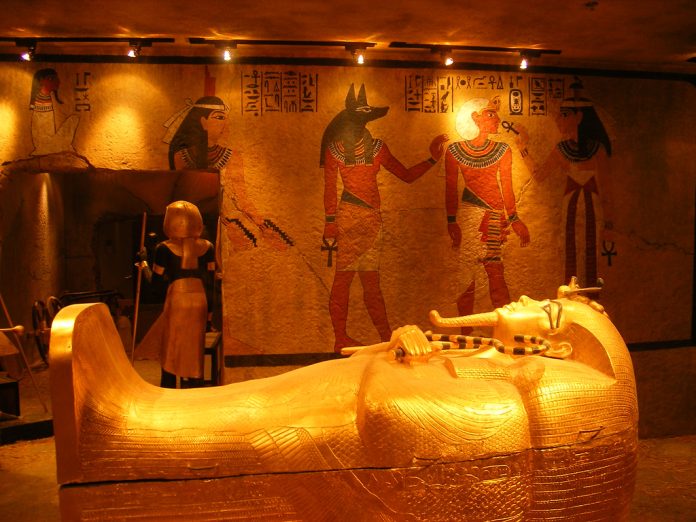Археологи, що працюють в рамках єгипетсько-американської місії South Asasif Conservation Project, зробили захоплююче відкриття поблизу Луксора: гробницю, що належить до періоду Середнього Царства Єгипту (близько 2030-1650 рр. до н.е.). Це перша гробниця цього періоду, виявлена в регіоні, що славиться своїми давньоєгипетськими пам’ятками та гробницями. Виявлена гробниця містить 11 запечатаних поховань, серед яких археологи знайшли “родину трун” — кілька поховань чоловіків, жінок і дітей, що дають змогу припустити, що ця гробниця використовувалася багатьма поколіннями родини.
Знахідка є неймовірним доповненням до археологічного розуміння життя та звичаїв давніх єгиптян, а її відкриття спричинило великий інтерес у науковому середовищі. Розкопки відкрили не лише труни, але й численні коштовні артефакти, серед яких намиста, браслети, персні зі скарабеями, а також пояси з аметисту. Однак гробниця постраждала від повеней, що призвели до значних ушкоджень дерев’яних конструкцій трун і лляних обгорток, хоча деякі предмети вдалося зберегти майже в ідеальному стані. Одним з найбільш вражаючих предметів є намисто з аметистових намистин та сердолікових кульок, що увінчане амулетом у вигляді голови бегемота.
Гробниця також містить велику кількість інших унікальних артефактів, таких як фаянсова фігурка родючості, прикрашена ювелірними виробами та детальними елементами, що свідчать про високий статус покійних. Одне з поховань чоловіка також стало темою особливого зацікавлення завдяки розкішному намисту, що свідчить про його високе становище в суспільстві.
Експерти припускають, що ця гробниця використовувалася кількома поколіннями родини, ймовірно, протягом 12-ї та початку 13-ї династії Єгипту. Важливим аспектом є і те, що це відкриття підсилює значення Південного Асасіфа як важливої частини некрополя Фіванського Середньовіччя, що досі містить багато загадок і дає нові можливості для наукових досліджень.


